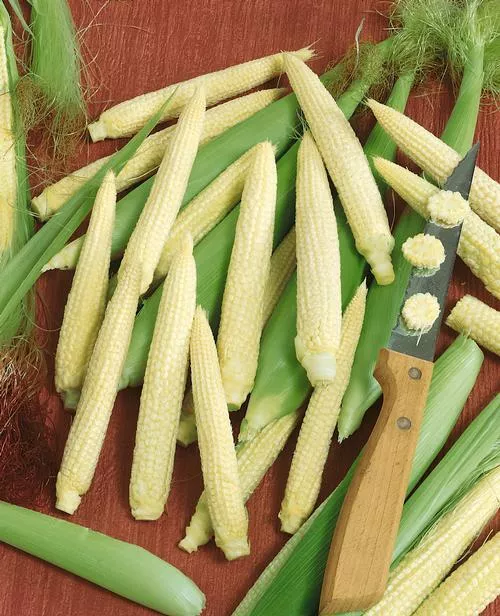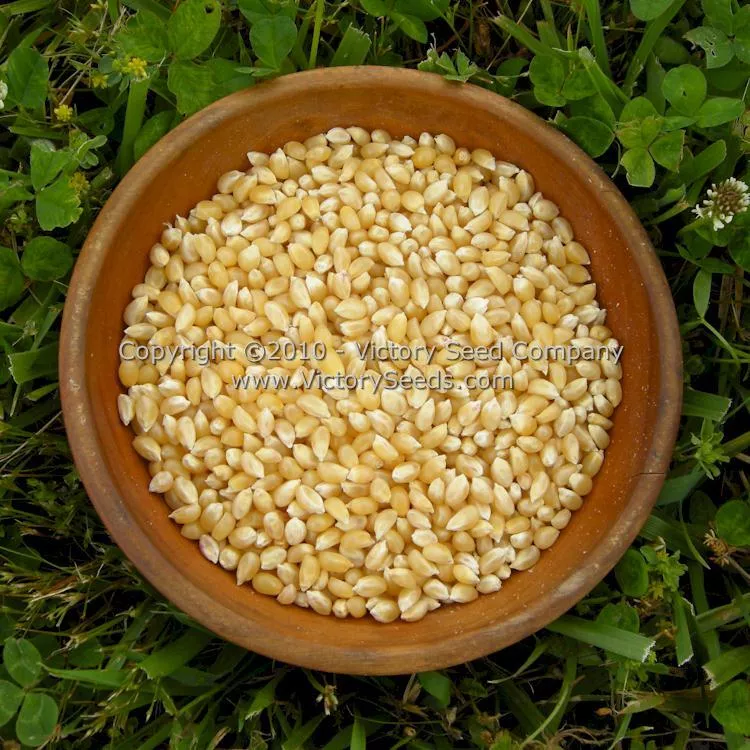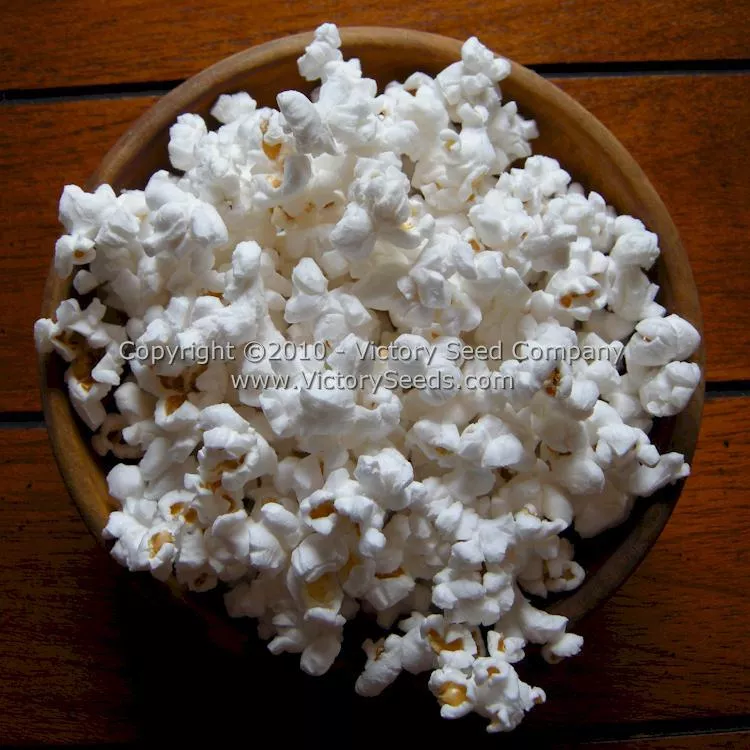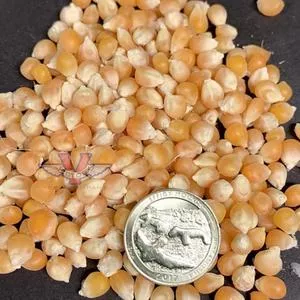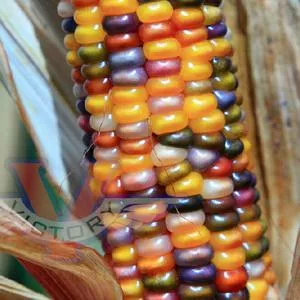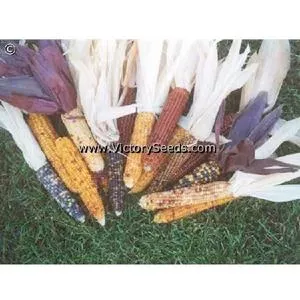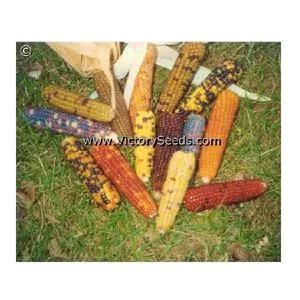


Japanese Hulless Popcorn
Zea mays subsp. mays
Price: $3.44
SKU: 31401711Choose a variant:
85 days - 'Japanese Hulless' popcorn is quite dwarf in habit with plants only reaching about five feet in height. Each stalk produces two to three ears that are short and thick, about four inches in length and two inches in diameter. Kernels are arranged irregularly on cob and are unusually tender, sweet, and pure white when popped.
Over the decades, 'Japanese Hulless' has also been sold as 'Tom Thumb', 'Australian Hulless',[2] and 'Dwarf Baby Rice'. Its exact history has been elusive but searching our horticultural library, it began appearing in most of the old seed company catalogs by the early 1920s. The earliest listing that we have found to date is its introduction in the Livingston Seed Company's catalog in 1918. They listed it as "Livingston's Tom Thumb or Japanese Hulless,"* declaring:
Over the decades, 'Japanese Hulless' has also been sold as 'Tom Thumb', 'Australian Hulless',[2] and 'Dwarf Baby Rice'. Its exact history has been elusive but searching our horticultural library, it began appearing in most of the old seed company catalogs by the early 1920s. The earliest listing that we have found to date is its introduction in the Livingston Seed Company's catalog in 1918. They listed it as "Livingston's Tom Thumb or Japanese Hulless,"* declaring:
"A new dwarf growing Pop Corn, heavy yielder, attractive ears peculiar in form, deep grains and almost free from hull when popped. Excellent quality."[1]
Because of its excellent attributes, it has not lost its appeal to home gardeners.
Genetic Classification: Open Pollinated
Planting Instructions: Soil must be at least 65ºF to germinate. Be patient and do not plant too early or you will waste a lot of seed! Plant in full sun and keep it watered. Corn is a wind-pollinated plant. Plant in blocks several rows wide to ensure full ears.
Sow seeds about 1½ to 2½ inch deep, 3 to 4 inches apart, in rows spaced 24 to 30 inches apart. Thin to 6 to 12 inches apart.
Informational Resources:
* - The use of the popcorn cultivar name, 'Tom Thumb' dates to at least the early twentieth century. It is not to be confused with the variety by the same name developed by the University of New Hampshire from a New Hampshire heirloom popcorn variety.
- "Livingston's Seed Annual for 1918," Livingston Seed Company, Columbus, Ohio, 1918.
- "The Maule Seed Book for 1920," William Henry Maule, Inc., Philadelphia, Pennsylvania, 1920.
* - The use of the popcorn cultivar name, 'Tom Thumb' dates to at least the early twentieth century. It is not to be confused with the variety by the same name developed by the University of New Hampshire from a New Hampshire heirloom popcorn variety.
Customer Reviews:
Do you have experience with this one? 📝 📣 Write a review!
★★★★★ Looking forward to popping it all up this winter :)
By Amy Schafer on October 29, 2014
By Amy Schafer on October 29, 2014
Planted this corn in my parents' garden this year, where the growing season is quite short, but this corn grew nicely once it warmed up this summer! Each stalk produced at least two nice, full ears! Most are 6 inches long! They are all drying in bunches from the rafters in our garage . . . looking forward to popping it all up this winter :)

